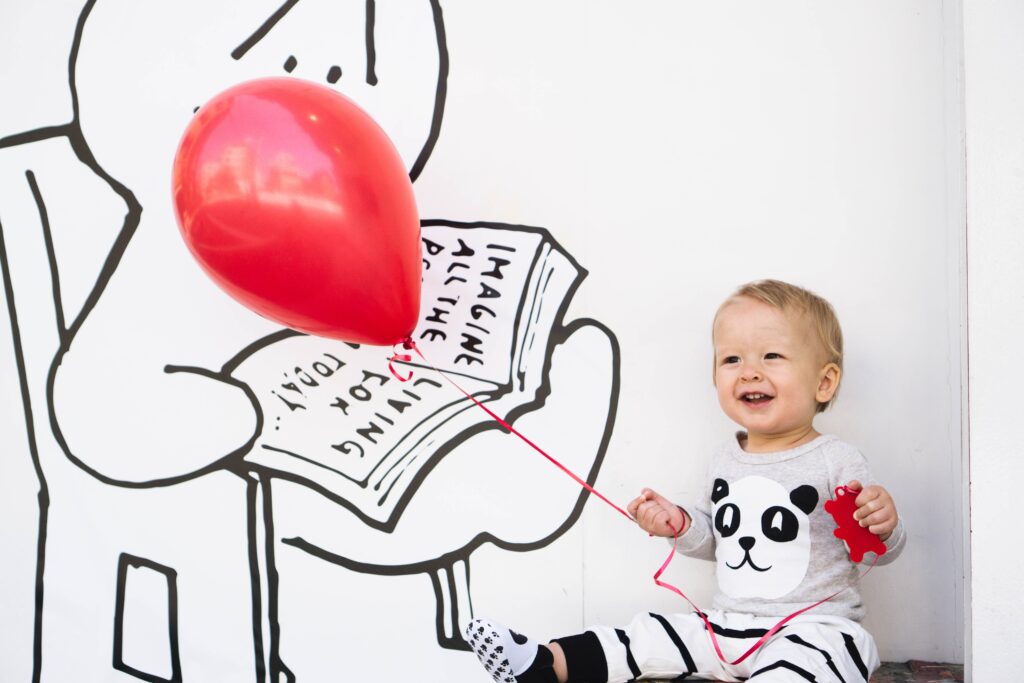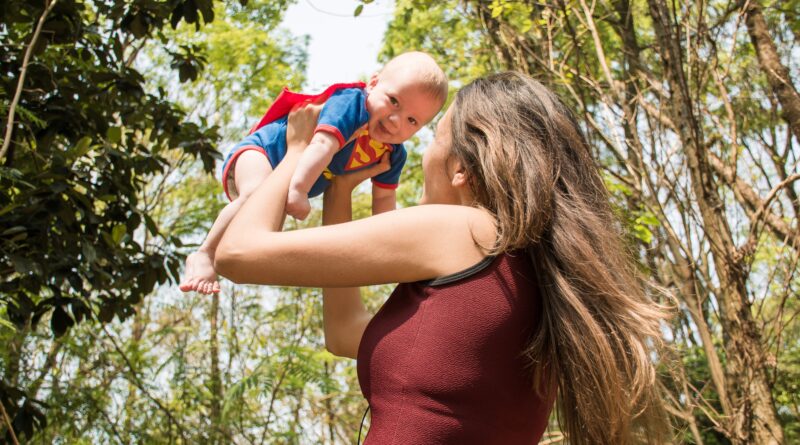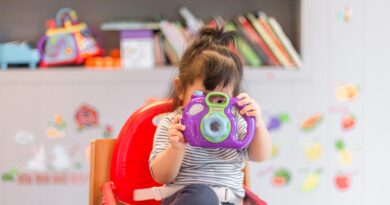The Power of Words: How Baby Talk Shapes Your Infant’s Language Skills
Have you ever wondered how your words can shape your infant’s language skills? The power of baby talk goes beyond its cute and endearing nature. In fact, recent studies have shown that the way we speak to our babies can significantly impact their language development. From the cadence and tone of our voice to the simplicity of our words, each aspect of baby talk plays a crucial role in shaping the linguistic abilities of our little ones. Join us as we explore the fascinating science of baby talk and uncover the ways in which your words can leave a lasting impact on your infant’s language skills. Prepare to be amazed by the power of your words!
The Power of Words: How Baby Talk Shapes Your Infant’s Language Skills
The early years of a child’s life are crucial for language development. As a parent or caregiver, you play a vital role in shaping your infant’s language skills. One powerful tool that can greatly influence your child’s linguistic development is baby talk. Baby talk, also known as infant-directed speech or motherese, refers to the unique way adults speak to infants. In this article, we will explore the definition, importance, and science behind baby talk, as well as its characteristics, benefits, potential challenges, and strategies for using it effectively.
1. Introduction to Baby Talk
1.1 Definition of Baby Talk
Baby talk can be defined as the simplified and exaggerated way adults speak to young children. It involves using a high-pitched voice, simplified vocabulary, and sing-song rhythm. Baby talk also includes exaggerated facial expressions and gestures to captivate the infant’s attention. While it may seem silly or exaggerated to adults, it is highly beneficial for infants’ language development.
1.2 Importance of Baby Talk in Language Development
Baby talk is not just a cute way to communicate with infants; it plays a crucial role in their language development. Research has shown that babies are more responsive to baby talk compared to adult language. The unique characteristics of baby talk capture attention, engage infants, and provide language input that they can easily process and imitate. By using baby talk, caregivers can lay the foundation for their child’s future language skills.
2. The Science behind Baby Talk
2.1 The Role of Caregiver-Infant Interaction
Caregiver-infant interaction is essential for language development. Baby talk serves as a catalyst for this interaction. When caregivers use baby talk, it captures the infant’s attention and encourages them to engage in reciprocal communication. This back-and-forth interaction helps infants learn the nuances of language, such as turn-taking, listening, and responding. By engaging in frequent and meaningful interactions, caregivers stimulate their infants’ language skills.
2.2 Brain Development and Language Acquisition
Baby talk is not only beneficial for caregiver-infant interaction but also for the developing brain. Studies have shown that baby talk activates specific areas of the infant brain responsible for language processing and comprehension. The repetitive and rhythmic nature of baby talk helps infants develop neural connections that are crucial for language acquisition. By exposing infants to rich and engaging language input through baby talk, caregivers promote healthy brain development.

3. Characteristics of Baby Talk
3.1 Simplified Vocabulary and Grammar
One of the key characteristics of baby talk is its simplified vocabulary and grammar. Caregivers tend to use shorter and simpler words, accompanied by exaggerated intonation patterns. The use of simplified language allows infants to better understand and process the information. By gradually introducing more complex words and sentence structures, caregivers can help infants expand their vocabulary and grasp the rules of grammar.
3.2 High-Pitched Voice and Sing-Song Rhythm
Baby talk is characterized by a higher-pitched voice and a sing-song rhythm. The melodic cadence of baby talk captures infants’ attention and makes the language more engaging. The exaggerated intonation and rhythm help infants differentiate between different words and phrases. Through repetition and emphasis on certain words or sounds, caregivers help infants develop phonological awareness, an essential skill for later reading and writing.
3.3 Exaggerated Facial Expressions and Gestures
In addition to the verbal aspects, baby talk also involves exaggerated facial expressions and gestures. Caregivers often use animated facial expressions, such as smiling, wide eyes, and exaggerated mouth movements, to enhance communication with infants. Similarly, they may use gestures, such as pointing or hand movements, to reinforce the meaning of their words. These visual cues help infants comprehend and associate words with their corresponding actions or objects.
4. Benefits of Baby Talk
4.1 Building a Strong Foundation for Language
Baby talk acts as a foundation for language acquisition. Through baby talk, infants are exposed to a rich linguistic environment that aids in vocabulary expansion, grammar development, and phonological awareness. The simplified language and repetitive nature of baby talk provide infants with ample opportunities to absorb and imitate sounds and words. This early exposure sets the stage for future language development and proficiency.
4.2 Strengthening Parent-Child Bond
Baby talk is not only beneficial for language development but also for fostering a strong bond between the caregiver and the infant. The use of baby talk demonstrates attentive and responsive caregiving, which promotes feelings of security and trust in the child. The engaging and interactive nature of baby talk creates a positive emotional connection between the caregiver and the infant. This strong parent-child bond contributes to the overall well-being and social-emotional development of the child.
4.3 Developing Social and Emotional Skills
Baby talk not only aids in language development but also plays a significant role in the development of social and emotional skills. The interactive nature of baby talk encourages infants to engage in reciprocal communication, turn-taking, and listening skills. Infants learn to interpret facial expressions, gestures, and intonation patterns, which are crucial for social communication. By engaging in meaningful conversations through baby talk, caregivers can help infants develop critical social and emotional skills from an early age.

5. Potential Challenges of Baby Talk
5.1 Impact on Vocabulary Development
While baby talk is beneficial for language development, it may have some potential challenges, particularly in vocabulary development. The simplified vocabulary used in baby talk may not expose infants to a wide range of words and concepts. Caregivers need to supplement baby talk with exposure to a variety of age-appropriate vocabulary to ensure a well-rounded vocabulary.
5.2 Transition to Adult Language
Another challenge of baby talk is the transition to adult language. As infants grow older, they need to gradually transition from the simplified language of baby talk to the more complex language of adults. Caregivers should consciously expose infants to adult language by gradually incorporating more complex words and sentence structures into their interactions. This gradual transition will help infants develop the necessary skills to understand and use adult language effectively.
5.3 Cultural Differences in Baby Talk
It is important to note that the characteristics and strategies of baby talk may vary across different cultures. Cultural norms and values influence the way caregivers interact with infants and the language styles they use. Therefore, it is essential to consider cultural differences when discussing baby talk and adapt strategies accordingly to ensure optimal language development for infants across diverse cultural backgrounds.
6. Strategies for Using Baby Talk Effectively
6.1 Creating a Language-Rich Environment
To use baby talk effectively, caregivers should focus on creating a language-rich environment for infants. This involves exposing infants to a variety of words, objects, and experiences. Caregivers can label objects, describe actions, and narrate daily routines to provide infants with a wealth of language input. Additionally, incorporating books, songs, and educational toys into the environment further enhances language exposure and engagement.
6.2 Balancing Baby Talk and Adult Language
Caregivers should aim to strike a balance between baby talk and adult language. While baby talk is crucial for infant language development, caregivers should gradually introduce more complex and adult-like language as the child grows. This balance ensures that infants are exposed to a range of linguistic input and are prepared for the transition to adult language.
6.3 Tailoring Baby Talk to Individual Infants
Every infant is unique, and caregivers should tailor baby talk to the individual needs and preferences of each child. Some infants may respond better to a higher-pitched voice, while others may prefer a softer tone. Caregivers should pay attention to their infant’s cues and adjust their language style accordingly. This personalized approach ensures that infants feel understood and engaged in the language-learning process.

7. Tips for Parents and Caregivers
7.1 Talking to Your Baby from Birth
Start talking to your baby from the moment they are born. Babies are receptive to language from an early age, and regular exposure to spoken language facilitates their language development. Engage in simple conversations with your baby, describe your actions, and respond to their sounds and gestures. This early communication sets the stage for future language skills.
7.2 Engaging in Interactive Conversations
As your baby grows, encourage interactive conversations. Respond to their babbling and cooing, leaving room for pauses and turn-taking. Maintain eye contact, use facial expressions and gestures, and give your full attention during these conversations. This interactive exchange fosters language development, listening skills, and social communication.
7.3 Reading Aloud and Singing to Your Baby
Reading aloud and singing to your baby are excellent ways to expose them to language and stimulate their language skills. Choose age-appropriate books with colorful pictures and engaging stories. Use varying intonation, rhythm, and gestures while reading or singing to captivate their attention. These activities not only enhance language development but also promote a love for books and literacy.
8. Conclusion
In conclusion, baby talk is a powerful tool for shaping your infant’s language skills. Through its unique characteristics and engaging nature, baby talk provides infants with the linguistic input necessary for language acquisition. By incorporating strategies such as creating a language-rich environment, balancing baby talk and adult language, and tailoring the language to individual infants, caregivers can optimize their child’s language development. So, embrace baby talk, engage in interactive conversations, and watch as your baby’s language skills flourish with the power of words.


